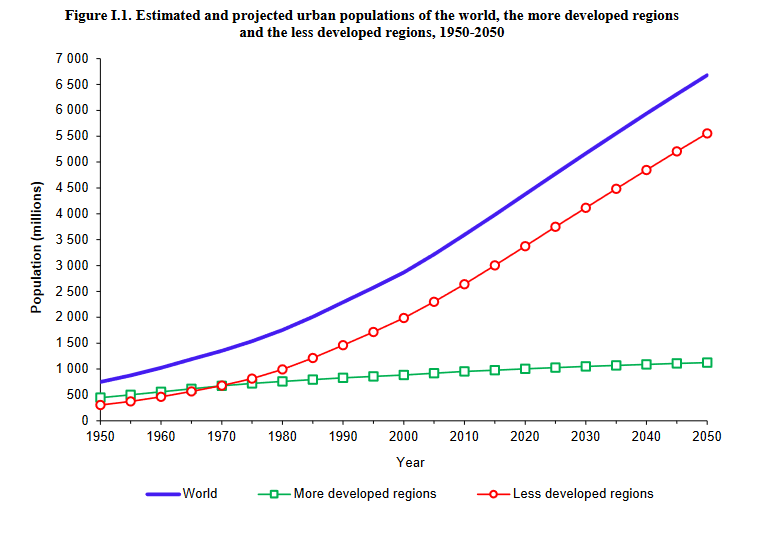Urban Heat Islands Explain Our Dilemma More Than “Climate Change”
Democracies operate through justifications because in a society of equals, you need to bribe and pander to people with symbols of intense feeling in order to get them to support you. As a result democracies are always based on lies and these lies take on a life of their own as the democracy goes on.
The current agenda involves “climate change,” or the idea that carbon levels are our biggest problem, not The Ecocide which is caused by there being very little natural space left for ecosystems to transact and protect their species. Climate change makes a complex problem into a simple one that we can control with laws, in theory.
Its most recent panic involves the Gulf Stream, which has warmed and shifted position:
A new study published today in Nature Climate Change now documents that over the past 20 years, the Gulf Stream has warmed faster than the global ocean as a whole and has shifted towards the coast.
“The warming we see near the Gulf Stream is due to two combined effects. One is that the ocean is absorbing excess heat from the atmosphere as the climate warms,” said Todd. “The second is that the Gulf Stream itself is gradually shifting towards the coast.”
Just like the jet stream in the atmosphere, the Gulf Stream sways and oscillates within the ocean…However, the basic drivers of the Gulf Stream — atmospheric wind patterns and the Earth’s rotation — will not disappear in a changing climate, so there is no concern that the Gulf Stream will shut down.
Of course, they blame the climate for what could be more easily explained other ways. They mention jet streams, which are the air currents that run around the world, and these combine into gyres which then determine the temperature of the Gulf Stream:
The Gulf Stream is caused by a large system of circular currents and powerful winds, called an oceanic gyre. There are five oceanic gyres on Earth. The Gulf Stream is part of the North Atlantic Subtropical Gyre.
The ocean is constantly in motion, moving water from place to place via currents. The Gulf Stream brings warm water from the Gulf of Mexico all the way up to the Norwegian Sea. As the warm water comes in, colder, denser water sinks and begins moving south—eventually flowing along the bottom of the ocean all the way to Antarctica.
Hint: when part of the ocean heats up, and not the whole thing, it is not “climate change”… it is localized effects. If these seem to be happening all over, check to see if humans are not doing the same things all over. If they are, you are seeing many localized effects of conformity to the same types of activities.
No one wants to admit that what is changing the jet streams is most likely intense points of heat that are now fairly large, having spread out, since over half of the world is urbanized. This urbanization has created more of these points of heat, accelerating over the past fifty years as the cities expanded:
In 1950 the urban population of the more developed regions was substantially larger than that of the less developed regions (446 million versus 305 million), so that the more developed regions accounted for 59 per cent of the world’s urban population at a time when they had just 32 per cent of the world’s total population. But already in the 1950s, the patterns of growth of the urban populations of the more developed and less developed regions were showing signs of divergence, with the former growing more slowly.
As a consequence, by 1970 the urban population of the less developed regions had surpassed that of the more developed regions (680 million versus 674 million), and the difference increased rapidly thereafter. In 2018, three times as many urban dwellers were estimated to live in the less developed regions as in the more developed regions (3.2 billion versus 1.0 billion). In that year the less developed regions accounted for 76 per cent of the world’s urban population and 84 per cent of the total world population.
As the developing world becomes increasingly urbanized, the difference between these two figures will decline. By 2050, with 5.6 billion urban dwellers, the less developed regions are projected to have 83 per cent of the world’s urban population and 87 per cent of the total world population.
This means that all around the world, humans are doing the same thing: putting down massive square mileage of concrete buildings and roads, running internal combustion engines, and living in little clusters that concentrate heat and emit it rapidly at night as the building materials cool.
Urbanization of this massive scale produces a worldwide network of urban heat islands that are everywhere because urbanization is now everywhere:
Structures such as buildings, roads, and other infrastructure absorb and re-emit the sun’s heat more than natural landscapes such as forests and water bodies. Urban areas, where these structures are highly concentrated and greenery is limited, become “islands” of higher temperatures relative to outlying areas. These pockets of heat are referred to as “heat islands.”
A review of research studies and data found that in the United States, the heat island effect results in daytime temperatures in urban areas about 1–7°F higher than temperatures in outlying areas and nighttime temperatures about 2–5°F higher. Humid regions (primarily in the eastern United States) and cities with larger and denser populations experience the greatest temperature differences.
Cities both produce and emit more heat than the countryside, which tends to re-absorb a lot of the excess. If you look, these numbers correspond to the higher temperatures of the Gulf Stream, with allowances for some energy dissipation as the hot air moves toward the sea.
It turns out that human activities are the primary driver of this change, but it is not carbon at risk, but heat itself radiated by cities:
As cities grow, new development such as roads and buildings displace natural surfaces like trees, ponds, and soil. This change in the local environment results in a corresponding change in the local climate. That’s because these natural surfaces help moderate air temperatures.
Trees and other plants, for instance, can lower air temperatures by providing shade. This vegetation, along with soil and water, also helps cool nearby air through “evaporative cooling,” which is a natural process by which evaporating water absorbs heat (much like sweat cools the human body).
The man-made surfaces that replace these features, however, tend not to have cooling effects. Instead, they tend to absorb and re-emit more heat, which makes their surroundings warmer too. Though much of that heat comes from the sunlight those surfaces receive, another source of heat is human activities—like power generation and the use of cars and air conditioners. The geometry of cities also contributes to heat islands: the narrow spaces between tall structures, known as urban canyons, can block wind and trap heat.
Even more, the water around these cities is heated above the norm for the region, telling us that hot air from the cities warms nearby water, which means that hot jet streams warm the Gulf Stream. Again we see the same pattern of the increase attributed to global warming in fact coming from heated water from urban heat islands:
Urban infrastructure efficiently routes runoff over hot impervious surfaces and through storm drains directly into streams and can lead to rapid, dramatic increases in temperature. Thermal regimes affect habitat quality and biogeochemical processes, and changes can be lethal if temperatures exceed upper tolerance limits of aquatic fauna. In summer 2009, we collected continuous (10-min interval) temperature data in 60 streams spanning a range of development intensity in the Piedmont of North Carolina, USA. The 5 most urbanized streams averaged 21.1°C at baseflow, compared to 19.5°C in the 5 most forested streams. Temperatures in urban streams rose as much as 4°C during a small regional storm, whereas the same storm led to extremely small to no changes in temperature in forested streams.
This in turn corresponds to the degree of motion of the Gulf Stream, which like the streams near cities, absorbs heat from the air which has risen from the urban heat island, and then passes it on to the ocean itself, with roughly the same rise in temperature then moving to the Gulf Stream:
According to their data, it has warmed on average by about 1°C (1.8 °F) over the past two decades, becoming increasingly lighter than the waters below. The team also found the Gulf Stream to be shifting closer to the shore by about 5 kilometers (3.1 miles) per decade on average, meaning that the Gulf Stream is moving gradually closer to the Northeastern United States continental shelf.
You can see why people talk about climate change: it is politically unpopular to tell the developing world that as most of the population of the world, it must stay in less-wealthy rural areas instead of creating great heat emitters through herding behavior in the cities.
Even more, the goal of weakening the first world and therefore allowing third world domination, which appeals to politicians because their careers now depend on those third-world votes and not the numerically smaller first-world votes, gains a justification in the idea of the first world limiting its energy use so others can use it instead.
If humanity were serious about avoiding The Ecocide, it would set aside half of Earth for nature, which would limit human activities and cause a natural gradual reduction in population. Instead, the Malthusian population bomb continues to rise, and with it comes the shadow of doom upon the land.
Luckily this seems to be changing as the ancient democracies of the West slowly realize that the third world is waging war against us, and therefore that we need to consciously decouple from it, also depriving it of the wealth it needs to continue this urbanization process.
Tags: climate change, conservation, environmentalism, green, gulf stream, jet stream, urban heat islands











